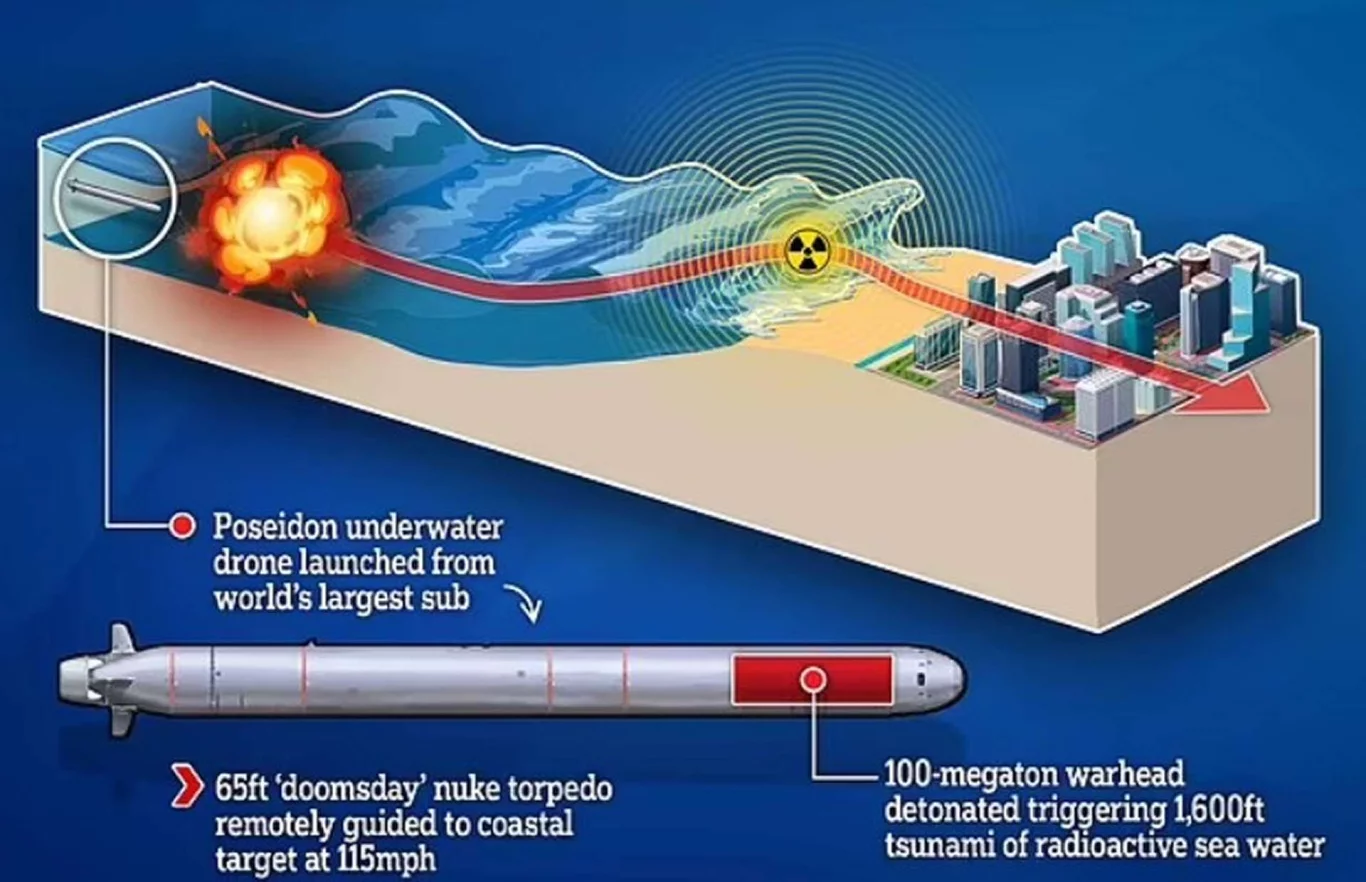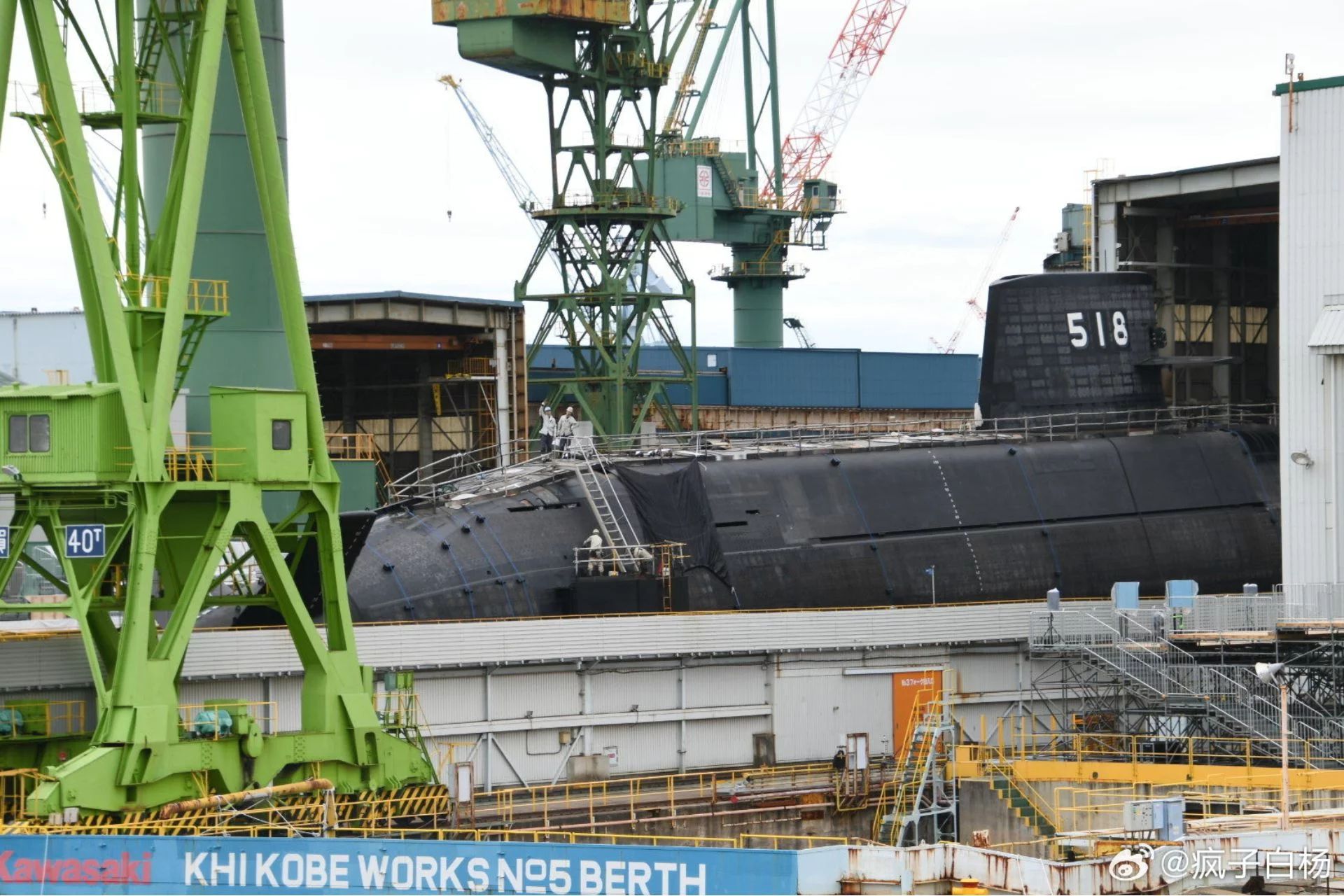A chilling and potentially game-changing development in underwater warfare has recently been claimed by Russia: the successful launch of its Poseidon nuclear submarine drone. This weapon, shrouded in secrecy and speculation for years, is not just another addition to Russia’s strategic arsenal; it is described with capabilities that evoke apocalyptic scenarios, most notably the ability to create devastating tsunamis. While the full extent of its development and operational status remains a subject of intense international debate and scrutiny, Russia’s public assertion of its launch signifies a profound and ominous advancement in strategic deterrence and underscores the evolving, and increasingly complex, nature of modern naval power.
The Poseidon, previously known as Status-6, is unlike any weapon system currently acknowledged by other major powers. It is not a conventional torpedo, nor is it a traditional submarine. Instead, it is conceptualized as an autonomous, nuclear-powered, and nuclear-armed underwater drone, designed to travel at extreme depths and speeds, making it exceptionally difficult to detect and intercept. Its purported mission profile is equally unsettling: to deliver a massive nuclear warhead against coastal cities or naval bases, and, according to some reports, to generate radioactive tsunamis capable of inundating vast areas.
Such claims, if true, represent a re-imagining of nuclear deterrence. During the Cold War, the focus was primarily on intercontinental ballistic missiles (ICBMs) and submarine-launched ballistic missiles (SLBMs). The Poseidon introduces a new dimension: a strategic weapon that operates in the deep ocean, potentially evading traditional missile defense systems by approaching its targets from unexpected vectors and depths. Its nuclear propulsion reportedly gives it virtually unlimited range, allowing it to loiter undetected for extended periods before striking.
The “tsunami weapon” aspect of the Poseidon is particularly alarming. While the precise mechanism is not fully clear, the idea is that a massive nuclear detonation off a coastline could displace an enormous volume of water, creating a radioactive tidal wave designed to destroy infrastructure and render coastal regions uninhabitable for extended periods. This concept taps into a deep-seated fear of environmental catastrophe as a weapon of war, adding a horrifying layer to nuclear deterrence.
Russia’s claims, while met with skepticism by some Western analysts regarding their full technical feasibility or exaggeration for psychological effect, cannot be entirely dismissed. Even the prospect of such a weapon changes strategic calculations. The very existence of a credible threat of an undetectable, unstoppable nuclear-armed underwater drone capable of causing catastrophic coastal devastation introduces new layers of uncertainty and risk into geopolitical equations.
This development also highlights Russia’s continued investment in asymmetric warfare capabilities – systems designed to counter the perceived technological advantages of rivals by exploiting vulnerabilities in novel ways. While Western militaries have focused on networked air power, advanced missile defense, and conventional naval dominance, Russia appears to be pursuing disruptive technologies that could bypass these strengths.
The Poseidon project, initially revealed in what some speculate was an accidental leak but now openly discussed by Russian officials, has spurred increased monitoring and analysis by naval powers worldwide. It necessitates a re-evaluation of underwater surveillance capabilities, anti-submarine warfare (ASW) doctrines, and strategic response options. The challenge lies in detecting a weapon designed specifically for stealth and deep-ocean operation.
In conclusion, Russia’s claim of a successful launch of the Poseidon nuclear submarine drone is a profoundly significant, and deeply unsettling, development in global strategic military capabilities. If its touted “tsunami-generating” capabilities are even partially realized, it represents a new and horrifying dimension to nuclear warfare. While the true operational status and exact capabilities remain subjects of intense scrutiny, this public declaration by Russia undoubtedly elevates geopolitical tensions and forces a critical re-assessment of naval power, nuclear deterrence, and the future of underwater warfare. It is a stark reminder that the arms race continues to push boundaries into increasingly terrifying and unpredictable realms.




